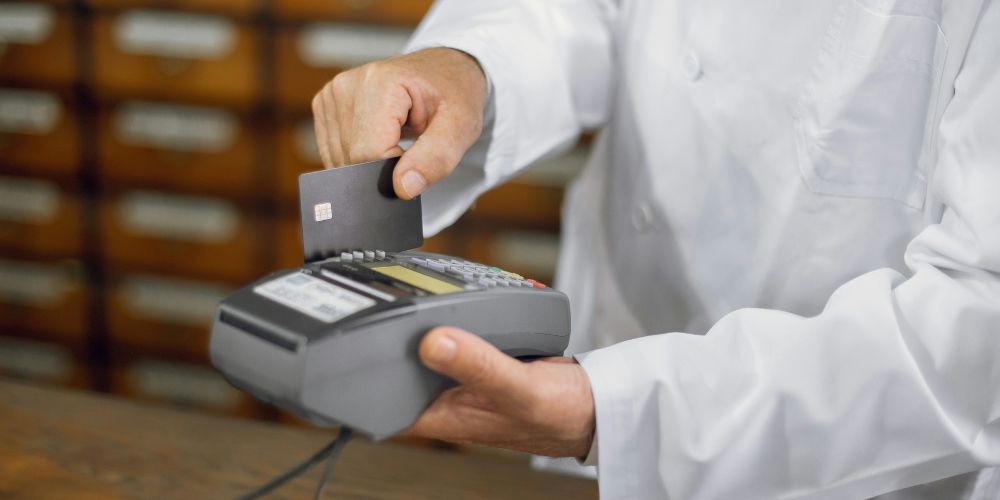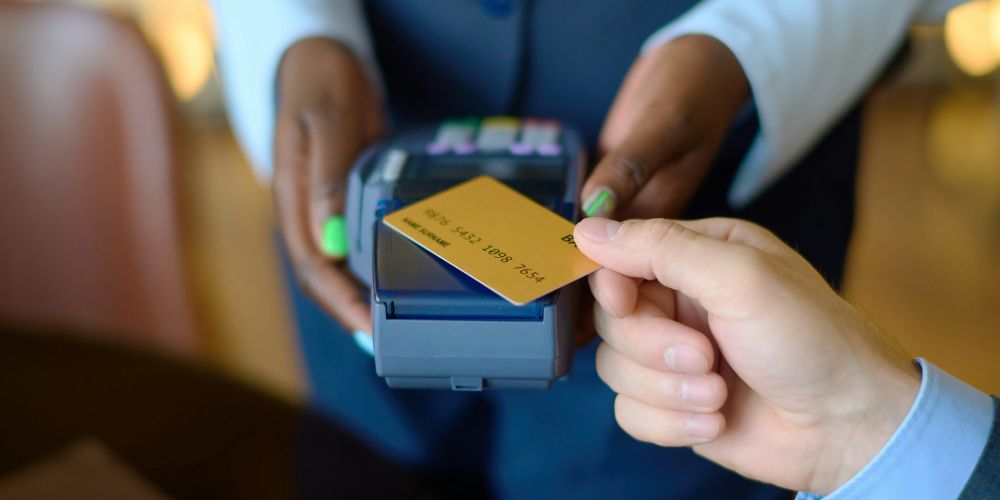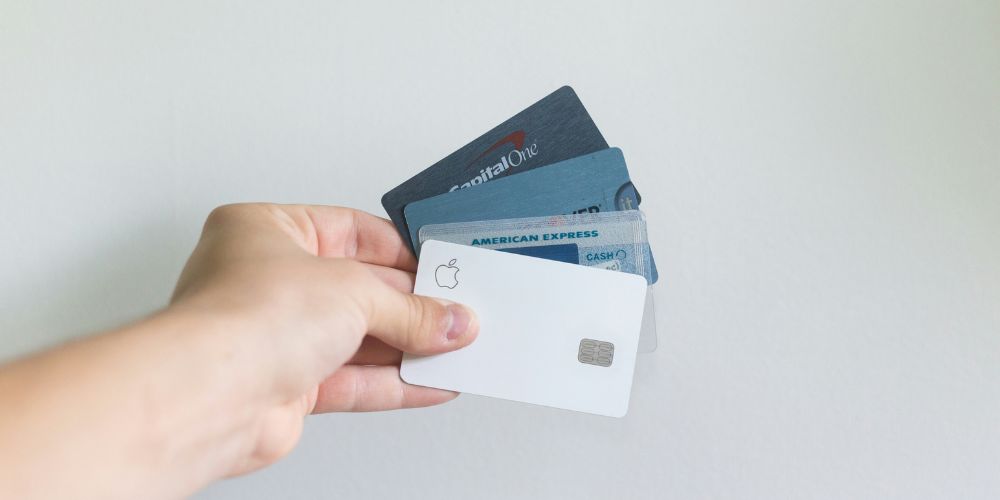Credit card processing is the method by which businesses accept and handle payments made with credit cards. This process involves several steps, from the moment a customer uses their card to the final transfer of funds into the merchant’s account. Processing credit cards enables businesses to offer a convenient payment option, increasing sales and improving customer satisfaction.
Importance for Businesses
For businesses, being able to process credit card payments is crucial. It opens the door to more customers who prefer cashless transactions. Accepting credit cards can also lead to higher sales volumes, as customers are likely to spend more when they can pay with a card. Additionally, credit card payment processing helps streamline operations by reducing the handling of cash and minimizing the risk of theft.
This guide provides a comprehensive look at how to process credit card payments. We will cover every aspect of the process, including how to set up credit card payment systems, the costs involved, and best practices for secure and efficient credit card processing. We will also discuss how to choose the right processing provider and offer answers to common questions about the credit card payment process. By the end of this guide, you will have a clear understanding of how to handle credit card transactions effectively and securely, ensuring your business can fully benefit from this essential service.
Understanding Credit Card Processing

Credit card processing is the system that allows businesses to accept payments from customers using credit cards. When a customer makes a purchase, their credit card details are captured and sent through a secure network. The information is verified, and if everything checks out, the payment is approved, and funds are transferred to the merchant’s account. This process involves several steps and key players to ensure the transaction is safe and smooth.
Key Players in Credit Card Processing
- Cardholder: This is the customer who owns the credit card and initiates the payment. When they make a purchase, they provide their credit card information either by swiping, inserting, or tapping their card, or by entering their details online.
- Merchant: The business or individual that accepts credit card payments in exchange for goods or services. Merchants need a system to capture the card details and process the payment, often through a credit card terminal or an online gateway.
- Issuing Bank: This is the bank that issued the credit card to the cardholder. The issuing bank verifies the cardholder’s details, checks available funds or credit, and either approves or declines the transaction.
- Acquiring Bank: This is the bank that processes credit card transactions on behalf of the merchant. The acquiring bank communicates with the issuing bank through the card networks to approve or decline the transaction and ensure the funds are transferred to the merchant.
- Card Networks: These are the companies that facilitate the transaction between the issuing bank and the acquiring bank. Major card networks include Visa, MasterCard, American Express, and Discover. They ensure the secure transfer of information and funds during the credit card transaction.
Understanding the roles of these key players and the steps involved helps ensure smooth and secure processing of credit cards, benefiting both businesses and customers.
Steps in Credit Card Processing

Processing credit cards involves several crucial steps that ensure a secure and efficient transaction from start to finish. Each step plays a vital role in the overall credit card payment process, enabling businesses to accept payments seamlessly. Let’s explore these steps in detail, starting with transaction initiation.
Step 1: Transaction Initiation
How Card Details Are Captured
The first step in the credit card payment process is transaction initiation. This is when the cardholder provides their credit card details to the merchant. There are several methods for capturing these details:
- Swiping: The cardholder swipes their card through a card reader. This method is common with magnetic stripe cards.
- Chip (EMV): The cardholder inserts their card into a chip reader. The chip on the card generates a unique transaction code, adding an extra layer of security.
- Tapping: The cardholder taps their card on a contactless reader. This method uses Near Field Communication (NFC) technology and is quick and convenient.
- Online Entry: For online purchases, the cardholder manually enters their card details on the merchant’s website. This includes the card number, expiration date, and security code (CVV).
Different Methods: In-Person, Online, Mobile
- In-Person: This method involves physical interaction between the cardholder and the merchant. The cardholder either swipes, inserts, or taps their card on the merchant’s point-of-sale (POS) system. In-person transactions are typically faster and more secure due to direct interaction with the card and cardholder.
- Online: In online transactions, the cardholder enters their card information on a checkout page. This method is popular for e-commerce and services where physical presence is not required. Online transactions rely heavily on encryption to protect card details during transmission.
- Mobile: Mobile transactions involve using a smartphone or tablet to make a payment. This can be done through mobile apps, digital wallets (like Apple Pay or Google Pay), or mobile card readers. Mobile payments offer convenience and flexibility, allowing cardholders to pay on the go.
Transaction initiation is the critical first step in the credit card processing system. It involves capturing the cardholder’s details using various methods, each suited to different payment environments. Whether swiping a card in a store, entering details online, or using a mobile device, this step sets the stage for the secure and efficient processing of credit cards.
Step 2: Authorization Request
After the transaction initiation, the next crucial step in processing credit cards is the authorization request. This step ensures that the cardholder has sufficient funds and that the transaction is secure.
Secure Data Transmission to the Acquiring Bank via Payment Gateway
Once the cardholder’s credit card details are captured, the information needs to be sent to the acquiring bank. This transmission is handled by a payment gateway, which acts as a bridge between the merchant and the acquiring bank. The payment gateway securely transmits the card information from the merchant’s point-of-sale (POS) system or online platform to the acquiring bank.
- Payment Gateway Role: The payment gateway collects the transaction details and forwards them to the acquiring bank for approval. It ensures that the data is sent promptly and securely, minimizing the risk of interception or fraud.
Encryption and Security Measures Involved
Security is a top priority in the credit card payment process. To protect sensitive card information during transmission, the payment gateway uses several encryption and security measures:
- Encryption: The payment gateway encrypts the card details before sending them to the acquiring bank. Encryption converts the information into a secure code that can only be deciphered by the intended recipient, ensuring that the data remains confidential during transmission.
- SSL/TLS Protocols: Secure Sockets Layer (SSL) and Transport Layer Security (TLS) protocols are used to create a secure connection between the merchant and the payment gateway. These protocols provide an additional layer of security, protecting the data from being intercepted or tampered with during transmission.
- Tokenization: Some payment gateways use tokenization, which replaces the card details with a unique identifier or “token.” This token can be used for processing the transaction without exposing the actual card information, further enhancing security.
- PCI Compliance: Payment gateways and merchants must comply with the Payment Card Industry Data Security Standard (PCI DSS). PCI compliance ensures that all parties involved follow strict security protocols to protect cardholder data throughout the credit card transaction process.
By implementing these security measures, the payment gateway ensures that the credit card payment processing is safe and reliable. This step is crucial for protecting both the cardholder and the merchant from potential fraud and data breaches.
The authorization request step involves securely transmitting the cardholder’s details to the acquiring bank via a payment gateway. The use of encryption, SSL/TLS protocols, tokenization, and PCI compliance ensures that the data remains protected during this critical phase of credit card processing. This secure data transmission is essential for the smooth and safe processing of credit cards.
Step 3: Transaction Authorization
After the authorization request is sent, the next step in the credit card payment process is transaction authorization. This is when the issuing bank checks the cardholder’s funds and assesses the risk of the transaction.
Issuing Bank Checks Funds and Risk Assessment
Once the payment gateway sends the card details to the acquiring bank, the information is forwarded to the issuing bank (the bank that issued the credit card to the cardholder). The issuing bank plays a critical role in ensuring the transaction is legitimate and that the cardholder has enough funds or credit to cover the purchase.
- Funds Verification: The issuing bank checks the cardholder’s account to ensure there are sufficient funds (for debit cards) or available credit (for credit cards) to complete the transaction. This step ensures that the cardholder can pay for the purchase.
- Risk Assessment: The issuing bank also conducts a risk assessment to determine if the transaction appears to be fraudulent. This involves analyzing various factors such as the cardholder’s transaction history, the location of the purchase, and the amount being spent.
Fraud Detection and Prevention Steps
To protect against fraud, the issuing bank employs several measures during the credit card transaction authorization process:
- Real-Time Fraud Detection: Many issuing banks use advanced algorithms and machine learning to detect potentially fraudulent transactions in real-time. These systems can flag unusual activity, such as a large purchase in a foreign country when the cardholder is typically located elsewhere.
- Verification Codes: The issuing bank may require additional verification, such as a one-time password (OTP) sent to the cardholder’s phone or email. This step ensures that the person making the transaction is the actual cardholder.
- Transaction Limits: Some banks set transaction limits for certain types of purchases or locations. If a transaction exceeds these limits, it may be flagged for further review.
- Suspicious Activity Alerts: If the bank detects suspicious activity, it can temporarily block the card and notify the cardholder. This allows the cardholder to confirm whether the transaction is legitimate.
Once the issuing bank completes the funds verification and risk assessment, it sends an authorization response back through the payment gateway to the merchant. This response indicates whether the transaction is approved or declined.
Transaction authorization involves the issuing bank verifying funds and assessing the risk of the transaction. By employing real-time fraud detection, verification codes, transaction limits, and suspicious activity alerts, the bank ensures the security of credit card payment processing. This step is crucial for protecting both the cardholder and the merchant from fraudulent transactions and ensuring the smooth processing of credit cards.
Step 4: Authorization Response
After the issuing bank checks the cardholder’s funds and assesses the risk, the next step in processing credit cards is the authorization response. This step involves relaying the response back to the merchant and handling the outcome of the transaction.
Response Relayed Back to the Merchant
Once the issuing bank decides whether to approve or decline the transaction, it sends the response back through the payment gateway. The payment gateway then forwards this response to the acquiring bank, which finally relays it to the merchant’s point-of-sale (POS) system or online platform. This entire process happens within a few seconds, ensuring a swift credit card transaction.
- Approved Transactions: If the transaction is approved, the merchant receives an approval code. This code indicates that the issuing bank has verified the cardholder’s funds and authorized the payment. The merchant can then proceed with providing the goods or services to the customer.
- Declined Transactions: If the transaction is declined, the merchant receives a decline code. This code indicates that the transaction could not be completed, possibly due to insufficient funds, a blocked card, or suspected fraud.
Handling Approved and Declined Transactions
- Approved Transactions: When a transaction is approved, the merchant completes the sale by delivering the purchased items or services to the customer. The approval also triggers the settlement process, where the funds will be transferred to the merchant’s account.
- Declined Transactions: If a transaction is declined, the merchant typically informs the customer and may request an alternative payment method. The customer might choose to use a different credit card, pay with cash, or resolve any issues with their issuing bank before attempting the transaction again.
The authorization response step involves communicating the result of the credit card payment process back to the merchant. This step ensures that the merchant knows whether to proceed with the transaction or request an alternative payment method, thereby maintaining the efficiency and security of processing credit card payments.
Step 5: Transaction Completion
After receiving an approval, the next step in the credit card payment process is transaction completion. This step involves the merchant providing the goods or services and notifying the customer of the successful transaction.
Merchant Provides Goods or Services
Once the merchant receives the authorization approval, they proceed to deliver the purchased goods or services to the customer. This step is crucial as it finalizes the credit card transaction and ensures customer satisfaction. For in-person transactions, this might mean handing over a product at the checkout counter. For online transactions, it involves confirming the order and preparing it for shipment.
Receipt and Customer Notification
To complete the processing of credit cards, the merchant issues a receipt to the customer. This receipt serves as proof of purchase and includes details such as the transaction amount, date, and authorization code. In a physical store, the receipt is usually printed out and given to the customer. For online transactions, the receipt is typically emailed to the customer.
Notifying the customer about the successful transaction reassures them that their credit card payment has been processed correctly. It also provides a record they can reference in case of any future questions or disputes about the transaction.
Transaction completion involves the merchant delivering the purchased items or services and issuing a receipt to the customer. This step ensures that the credit card payment processing is finalized, keeping both the merchant and the customer informed and satisfied.
Step 6: Settlement and Funding
The final step in the credit card payment process is settlement and funding. This step ensures that the merchant receives the funds from the completed transactions.
Batching of Transactions
At the end of each business day, the merchant’s point-of-sale (POS) system or online payment platform batches all approved transactions together. This batch is then sent to the acquiring bank for processing. Batching transactions helps streamline the processing of credit cards, making it easier to manage multiple transactions at once.
- Daily Batching: Most merchants batch transactions daily to ensure timely settlement. This process involves compiling all the day’s transactions into a single batch file.
- Automated Batching: Many modern POS systems automatically batch transactions at a set time each day, reducing the need for manual intervention and ensuring consistency.
Transfer of Funds to the Merchant’s Account
Once the acquiring bank receives the batch, it processes the transactions and requests the corresponding funds from the issuing banks. The issuing banks then transfer the funds through the card networks (e.g., Visa, MasterCard) to the acquiring bank.
- Funding Process: The acquiring bank deposits the funds into the merchant’s account, minus any processing fees. This transfer ensures that the merchant receives the payment for the goods or services provided.
Timeframe for Settlement
The timeframe for settlement can vary based on several factors, including the merchant’s agreement with the acquiring bank and the type of transaction.
- Standard Settlement: Typically, funds are transferred to the merchant’s account within 1 to 3 business days after batching. This timeframe allows for the processing of transactions through the various banking systems.
- Next-Day Settlement: Some acquiring banks offer next-day settlement for an additional fee, which can be beneficial for businesses that need quicker access to their funds.
- Instant Settlement: For a higher fee, some payment processors provide instant settlement options, allowing merchants to access their funds almost immediately.
Settlement and funding involve batching daily transactions, processing them through the acquiring and issuing banks, and transferring the funds to the merchant’s account. The timeframe for receiving funds typically ranges from 1 to 3 business days, but faster options are available for an additional cost. This step ensures that the merchant is paid for their services, completing the credit card transaction process and maintaining the flow of business operations.
Costs Associated with Credit Card Processing

Understanding the costs involved in credit card processing is crucial for managing expenses and maximizing profits. These costs can vary by provider and transaction type. Here are the key costs:
Transaction Fees
Transaction fees are the primary cost of processing credit cards and include:
- Interchange Fees: Paid to the issuing bank for handling the transaction. These are a percentage of the transaction amount plus a fixed fee, varying by card type and transaction nature.
- Assessment Fees: Charged by card networks (like Visa and MasterCard) for using their systems, usually a small percentage of the transaction amount.
- Processor Markup: Additional fee charged by the payment processor, which can be a fixed fee, a percentage, or both.
Monthly and Setup Fees
In addition to transaction fees, many processors charge:
- Monthly Service Fees: Cover the cost of maintaining the merchant account and customer support, ranging from a few dollars to several hundred dollars per month.
- One-Time Setup Fees: Charged to establish your merchant account and configure the payment system, typically a one-time cost.
Equipment and Terminal Fees
To accept credit card payments, businesses need equipment:
- POS Systems: Necessary for capturing card details during in-person transactions, costing from a few hundred to several thousand dollars based on features.
- Card Readers: Needed for mobile payments, often less expensive but essential.
Chargeback and PCI Compliance Fees
Additional significant costs include:
- Chargeback Fees: Fees for handling disputed charges, which can add up if disputes are frequent.
- PCI Compliance Fees: Costs for adhering to security standards to protect cardholder data, including annual fees and expenses for security assessments.
Hidden Fees
Hidden fees can unexpectedly increase processing costs, such as:
- Early Termination Fees: Charged if you end your contract early.
- Monthly Minimum Fees: Applied if your transaction volume is below a certain threshold.
- Statement Fees: For receiving paper statements.
Carefully review your contract with the payment processor to avoid unexpected charges. The costs associated with credit card payment processing include transaction fees, monthly and setup fees, equipment costs, chargeback and PCI compliance fees, and potential hidden fees. Being aware of these costs helps businesses make informed decisions and choose the best credit card processing solutions.
Setting Up Credit Card Processing

Setting up credit card processing for your business is essential to accept payments efficiently and securely. Here are the key steps:
Getting a Merchant Account
A merchant account allows businesses to accept credit and debit card payments. Here’s how to set it up:
- Choose a Provider: Compare different providers based on fees, services, and reviews.
- Apply for an Account: Fill out an application with your business details.
- Approval Process: The provider reviews your application, checks credit history, and assesses business risk. Once approved, you can start accepting credit card transactions.
Setting Up POS Systems
A Point-of-Sale (POS) system is crucial for in-person transactions:
- Select a POS System: Choose one that fits your needs with features like inventory management and sales reporting.
- Install the Hardware: Purchase and set up necessary hardware, such as card readers and receipt printers.
- Software Configuration: Install and configure the software, including product catalogs and pricing.
- Training: Train staff on using the POS system for processing credit cards.
Integrating Payment Gateways for Online Transactions
For online sales, integrating a payment gateway is essential:
- Choose a Payment Gateway: Select one compatible with your e-commerce platform. Options include PayPal, Stripe, and Square.
- Sign Up and Configure: Create an account and follow instructions to integrate the gateway with your website.
- Secure Checkout: Use SSL certificates to encrypt data and protect customer information.
- Test Transactions: Run tests to ensure smooth processing and correct fund deposits.
Ensuring PCI Compliance
PCI compliance is mandatory for handling credit card payments:
- Understand PCI DSS: Learn about the requirements to secure credit card processing and protect against breaches.
- Assess Your Systems: Conduct self-assessments or hire professionals to review your systems.
- Implement Security Measures: Use encryption, firewalls, and regular updates. Train staff in security practices.
- Regular Audits: Schedule audits to ensure ongoing compliance and address security gaps.
By following these steps, businesses can securely and efficiently handle credit card payments, enhancing customer satisfaction and operational efficiency.
Best Practices for Credit Card Processing

Implementing best practices for credit card processing helps ensure secure transactions and protect customer data. Here are some essential practices:
Securing Transactions and Protecting Customer Data
- Encryption: Encrypt card details during transmission to protect against unauthorized access.
- Tokenization: Use tokens instead of actual card details for added security, especially online.
- PCI Compliance: Follow PCI DSS standards to safeguard cardholder data and prevent breaches.
- Secure Networks: Use secure networks, avoid public Wi-Fi, and ensure strong passwords and security protocols.
Minimizing Chargebacks
- Clear Communication: Provide accurate product descriptions, prices, and terms to avoid disputes.
- Prompt Customer Service: Address customer inquiries and resolve issues quickly to prevent disputes from becoming chargebacks.
- Accurate Records: Maintain detailed transaction records, including receipts and communications, to resolve disputes effectively.
Regularly Updating Security Measures
- Software Updates: Keep POS systems, payment gateways, and software updated to protect against vulnerabilities.
- Security Audits: Conduct regular audits to identify and fix security weaknesses.
- Two-Factor Authentication: Use two-factor authentication for accessing sensitive systems to enhance security.
Training Staff on Proper Handling of Credit Card Transactions
- Security Protocols: Train employees on security protocols, including checking cardholder IDs and recognizing suspicious transactions.
- Handling Card Information: Instruct staff on secure handling of card details, avoiding writing them down, and using secure entry methods.
- Responding to Fraud: Educate staff on recognizing fraud and the steps to take if fraud is suspected.
By following these practices, businesses can ensure secure and efficient credit card payment processing, protect their operations, and build customer trust.
Conclusion
In this guide, we covered the essential steps for processing credit cards, including transaction initiation, authorization request, transaction authorization, authorization response, transaction completion, and settlement and funding. We also discussed the costs involved, setting up credit card payment processing, and best practices for secure transactions.
Choosing the right processing provider is crucial. A good provider offers competitive fees, robust security measures, and excellent customer support. Make sure to compare different options and read reviews before making your decision.
For efficient and secure credit card payment processing, always follow best practices: secure your transactions, minimize chargebacks, update your security measures regularly, and train your staff properly. By doing so, you can ensure a smooth and safe experience for both your business and your customers. This not only protects your business but also builds trust and confidence with your customers.
FAQs: Process Credit Cards
What is the difference between a payment gateway and a payment processor?
A payment gateway and a payment processor are both essential for credit card payment processing, especially when you need to process credit cards online, but they serve different functions. A payment gateway is a tool that securely transmits the card details from the merchant’s website or point-of-sale system to the payment processor. It acts as a bridge between the merchant and the acquiring bank. A payment processor, on the other hand, is responsible for handling the transaction details, communicating with the issuing bank, and ensuring the funds are transferred to the merchant’s account. In short, the gateway transmits the data, while the processor handles the actual transaction.
How long does it take to process a credit card transaction?
The time it takes to process a credit card transaction can vary. Typically, the authorization process happens almost instantly, usually within a few seconds. However, the settlement process, where funds are transferred to the merchant’s account, can take 1 to 3 business days. Some payment processors offer next-day or even instant settlement options for an additional fee, allowing merchants quicker access to their funds.
How can businesses reduce credit card processing fees?
Businesses can reduce credit card processing fees by shopping around for the best rates and negotiating with payment processors. Choosing a pricing plan that fits your transaction volume and business type can also help. Avoiding unnecessary fees, such as those for paper statements, and ensuring PCI compliance to avoid fines can further reduce costs. Additionally, businesses can encourage customers to use lower-cost payment methods or offer discounts for cash payments to reduce the overall processing expenses.
Author

Emily brings a wealth of financial experience and analytical skills to the table. She specializes in helping businesses optimize their merchant services costs and identify opportunities for improvement. When she's not working, Emily enjoys yoga, reading, and volunteering for animal shelters.
View all posts





